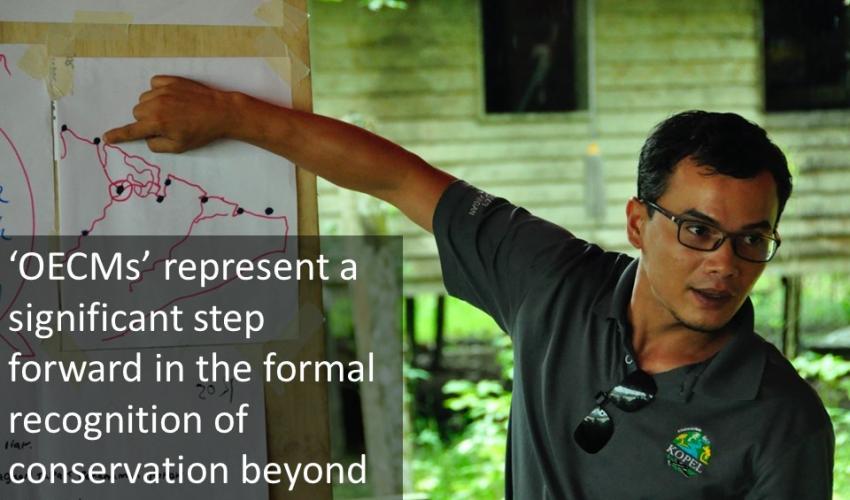
Other effective area-based conservation measures (OECMs) are becoming an increasingly important topic in the discussions leading up to the post-2020 Global Biodiversity Framework. As a contribution to the dialogue, the Asia Protected Areas Partnership (APAP) chose OECMs as the topic for its very first webinar, held on the 23rd of April 2020. The webinar was specifically designed to provide APAP members with an introduction to the concept of OECMs and the ways in which these sites can complement protected area systems.
Mr Harry Jonas, Co-chair of the IUCN World Commission on Protected Areas (WCPA) Task Force on OECMs, began the webinar by providing an overview of OECMs and their challenges and opportunities. He also introduced two key IUCN technical reports: Recognising and reporting other effective area-based conservation measures (2019) and A step-by-step methodology for identifying, reporting, recognising, and supporting OECMs (forthcoming). Mr Jonas recommended several initial steps that can be taken by protected areas agencies to being the process of recognising, supporting and reporting OECMs. These include translating the IUCN technical reports into national languages, organising briefing sessions with other government ministries and departments to introduce the concept, and carrying out national assessments of potential OECMs.
During the discussion session, participants asked about the legal frameworks for OECMs and the challenges and opportunities for indigenous peoples and local communities relating to OECM recognition. They also sought clarification on the differences between OECMs and international designations such as UNESCO Biosphere Reserves, Important Bird Areas and Ramsar Sites. Participants also asked if OECMs could be included on the IUCN Green List of Protected and Conserved Areas. These issues will be fully addressed at the upcoming APAP workshop on OECMs (13-14 August 2020).
Following the webinar, Dr Scott Perkin, Head of the Natural Resources Group in the IUCN Asia Regional Office, said, “The number and diversity of participants who joined the webinar demonstrated that there is considerable interest in OECMs across the Asia region; however, it will take time for the concept to be further clarified and applied at scale. The webinar highlighted the potential for OECMs to complement and strengthen protected area networks, by increasing connectivity and generating support for buffer areas. It also laid the foundation for the forthcoming APAP technical workshop on OECMs, to be held on from 13 to 14 of August 2020.”
A video of Harry Jonas’ presentation can be found here.
